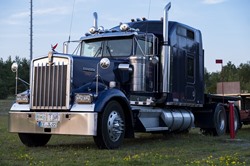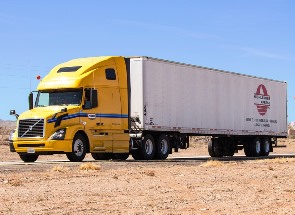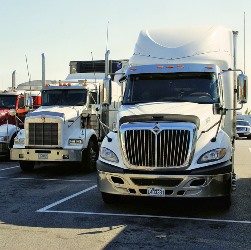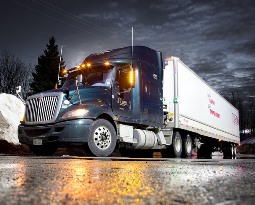How to Select the Best Trucking School near Makaweli Hawaii
 Congrats on your decision to become a truck driver and enroll in a CDL school near Makaweli HI. Maybe it has always been your fantasy to hit the open highway while driving a huge tractor trailer. Or perhaps you have done some analysis and have discovered that a career as a truck driver offers excellent wages and flexible job opportunities. Regardless of what your reason is, it’s important to get the appropriate training by selecting the right CDL school in your area. When reviewing your options, there are a number of factors that you’ll need to think about prior to making your ultimate choice. Location will undoubtedly be an issue, especially if you need to commute from your Makaweli residence. The cost will also be of importance, but selecting a school based solely on price is not the ideal means to ensure you’ll get the appropriate training. Just remember, your objective is to learn the knowledge and skills that will enable you to pass the CDL examinations and become a qualified truck driver. So keeping that objective in mind, just how do you select a truck driving school? The answer to that question is what we are going to address in the rest of this article. But first, we are going to talk a little bit about which CDL license you will ultimately need.
Congrats on your decision to become a truck driver and enroll in a CDL school near Makaweli HI. Maybe it has always been your fantasy to hit the open highway while driving a huge tractor trailer. Or perhaps you have done some analysis and have discovered that a career as a truck driver offers excellent wages and flexible job opportunities. Regardless of what your reason is, it’s important to get the appropriate training by selecting the right CDL school in your area. When reviewing your options, there are a number of factors that you’ll need to think about prior to making your ultimate choice. Location will undoubtedly be an issue, especially if you need to commute from your Makaweli residence. The cost will also be of importance, but selecting a school based solely on price is not the ideal means to ensure you’ll get the appropriate training. Just remember, your objective is to learn the knowledge and skills that will enable you to pass the CDL examinations and become a qualified truck driver. So keeping that objective in mind, just how do you select a truck driving school? The answer to that question is what we are going to address in the rest of this article. But first, we are going to talk a little bit about which CDL license you will ultimately need.
Which Commercial Drivers License Should You Get?
 In order to operate commercial vehicles legally within the USA and Makaweli HI, a driver needs to obtain a CDL (Commercial Driver’s License). The three classes of licenses that a person can qualify for are Class A, Class B and Class C. Given that the topic of this article is how to pick a truck driving school, we will highlight Class A and B licenses. What distinguishes each class of CDL is the type of vehicle that the driver can operate together with the GVWR (Gross Vehicle Weight Rating) or GCWR (Gross Combination Weight Rating). Following are brief descriptions of the 2 classes.
In order to operate commercial vehicles legally within the USA and Makaweli HI, a driver needs to obtain a CDL (Commercial Driver’s License). The three classes of licenses that a person can qualify for are Class A, Class B and Class C. Given that the topic of this article is how to pick a truck driving school, we will highlight Class A and B licenses. What distinguishes each class of CDL is the type of vehicle that the driver can operate together with the GVWR (Gross Vehicle Weight Rating) or GCWR (Gross Combination Weight Rating). Following are brief descriptions of the 2 classes.
Class A CDL. A Class A Commercial Drivers License is needed to drive any vehicle that has a GCWR of more than 26,000 lbs., including a towed vehicle of greater than 10,000 lbs. A few of the vehicles that drivers may be able to operate with Class A licenses are:
- Interstate or Intrastate Tractor Trailers
- Trucks with Double or Triple Trailers
- Tanker Trucks
- Livestock Carriers
- Class B and Class C Vehicles
Class B CDL. A Class B CDL is required to operate single vehicles having a GVWR of greater than 26,000 lbs., or a GCWR of more than 26,000 lbs. including a towed vehicle weighing up to 10,000 lbs. Some of the vehicles that operators may be qualified to drive with Class B licenses are:
- Tractor Trailers
- Dump Trucks
- Cement Mixers
- Large Buses
- Class C Vehicles
Both Class A and Class B Commercial Drivers Licenses may also need endorsements to drive specific types of vehicles, including school or passenger buses. And a Class A licensee, with the proper needed endorsements, can operate any vehicle that a Class B licensee is authorized to operate.
Click Here to Get Free Information on Truck Driving Schools Near You!
How to Evaluate a Truck Driving School
 When you have decided which CDL you wish to pursue, you can start the undertaking of evaluating the Makaweli HI truck driver schools that you are considering. As previously mentioned, cost and location will certainly be your initial considerations. But it can’t be emphasized enough that they should not be your sole considerations. Other variables, for example the reputations of the schools or the experience of the instructors are similarly or even more important. So below are a few additional factors that you need to research while performing your due diligence before selecting, and especially paying for, your truck driver training.
When you have decided which CDL you wish to pursue, you can start the undertaking of evaluating the Makaweli HI truck driver schools that you are considering. As previously mentioned, cost and location will certainly be your initial considerations. But it can’t be emphasized enough that they should not be your sole considerations. Other variables, for example the reputations of the schools or the experience of the instructors are similarly or even more important. So below are a few additional factors that you need to research while performing your due diligence before selecting, and especially paying for, your truck driver training.
Are the Schools Accredited or Certified ? Very few truck driving schools in the Makaweli HI area are accredited because of the stringent process and expense to the schools. However, certification is more prevalent and is offered by the Professional Truck Driver Institute (PTDI). A school is not required to become certified, but there are several advantages. Potential students know that the training will be of the highest standard, and that they will be given plenty of driving time. As an example, PTDI requires 44 hours of actual driving time, not simulations or ride-alongs. So if a school’s program is certified (the program, not the school is certified), students know that the training and curriculum will comply with the very high standards set by PTDI.
How Long in Business? One indicator to help determine the quality of a truck driver school is how long it has been in operation. A negatively reviewed or a fly by night school typically will not stay in business very long, so longevity is a plus. However, even the best of Makaweli HI schools had to begin from their opening day of training, so consider it as one of multiple qualifiers. You can also learn what the school’s track record is regarding successful licensing and job placement of its graduating students. If a school won’t supply those numbers, look elsewhere. The schools should also maintain associations with local and national trucking companies. Having a large number of contacts not only points to a superior reputation within the profession, but also boosts their job placement program for students. It also wouldn’t be a bad idea to contact the Hawaii licensing department to verify that the CDL trucking schools you are reviewing are in good standing.
How Effective is the Training? At a minimum, the schools should be licensed in Hawaii and hire teachers that are trained and experienced. We will discuss more about the teachers in the next section. In addition, the student to instructor proportion should be no higher than 4 to 1. If it’s any greater, then students will not be receiving the personal instruction they will need. This is particularly true regarding the one-on-one instruction for behind the wheel training. And be critical of any school that insists it can train you to be a truck driver in a comparatively short period of time. Learning to be a truck driver and to drive a tractor trailer skillfully requires time. Most Makaweli HI schools provide training programs that run from three weeks to as long as two months, based on the class of license or type of vehicle.
How Experienced are the Instructors? As previously stated, it’s essential that the instructors are qualified to teach driving techniques and experienced as both instructors and drivers. Although a number of states have minimum driving time requirements to be certified as a teacher, the more successful driving experience a teacher has the better. It’s also important that the teachers keep current with industry advancements or any new regulations or changes in existing laws. Assessing teachers may be a little more subjective than other criteria, and possibly the best method is to pay a visit to the school and speak with the instructors face to face. You can also speak with a few of the students going through the training and ask if they are satisfied with the quality of instruction and the teacher’s ability to train them.
Adequate Driving Time? Above all else, a good truck driving school will provide lots of driving time to its students. After all, isn’t that what it’s all about? Driving time is the real time spent behind the wheel operating a truck. While the use of ride-a-longs with other students and simulators are necessary training tools, they are no replacement for real driving. The more training that a student receives behind the wheel, the better driver she or he will become. Although driving time fluctuates among schools, a reasonable standard is a minimum of 32 hours. If the school is PTDI certified, it will furnish at least 44 hours of driving time. Check with the Makaweli HI schools you are looking at and ask how much driving time they furnish.
Are they Captive or Independent ? You can receive discounted or even free training from a number of truck driver schools if you make a commitment to drive for a specified carrier for a defined amount of time. This is what’s known as contract training, and the schools that provide it are called captives. So rather than having affiliations with many different trucking lines that they can refer their students to, captives only refer to one company. The benefit is receiving free or less expensive training by giving up the flexibility to initially work wherever you choose. Naturally contract training has the potential to restrict your income opportunities when starting out. But for some it may be the only way to receive affordable training. Just make sure to ask if the Makaweli HI schools you are looking at are independent or captive so that you can make an informed decision.
Offer CDL Testing Onsite? There are several states that will allow 3rd party CDL testing onsite of trucking schools for its grads. If onsite testing is available in Hawaii, ask if the schools you are considering are DMV certified to offer it. One advantage is that it is more accommodating than contending with graduates of other schools for test times at Hawaii testing facilities. It is also an indication that the DMV views the authorized schools to be of a higher quality.
Are the Class Times Accessible? As previously mentioned, CDL training is just 1 to 2 months long. With such a short term, it’s imperative that the Makaweli HI school you choose offers flexibility for both the scheduling of classes and the curriculum. As an example, if you’re having a hard time learning a particular driving maneuver, then the teacher should be willing to dedicate more time with you until you have it mastered. And if you’re still working while attending training, then the class scheduling must be flexible enough to accommodate working hours or other commitments.
Is Job Assistance Offered? As soon as you have obtained your commercial driver’s license after graduating from truck driver school, you will be anxious to begin your new career. Verify that the schools you are contemplating have job assistance programs. Ask what their job placement percentage is and what average salary their graduates start at. Also, find out which national and local trucking firms their graduates are placed with for hiring. If a school has a poor job placement rate or few Makaweli HI employers recruiting their graduates, it may be a sign to search elsewhere.
Is Financial Assistance Offered? Trucking schools are similar to colleges and other Makaweli HI area vocational or trade schools when it comes to loans and other forms of financial assistance being offered. Ask if the schools you are assessing have a financial aid department, or at least someone who can help you understand the options and forms that must be submitted.
Commercial Drivers License Schools Makaweli Hawaii
 Picking the right truck driver school is a critical first step to launching your new occupation as a long distance or local truck driver. The skill sets taught at school will be those that mold a new career behind the wheel. There are many options offered and understanding them is vital to a new driver’s success. You originally came to our website because of your interest in Commercial Drivers License Schools and wanting information on the topic Professional Driver Training. But first and foremost, you must get the necessary training in order to drive a large commercial vehicle in a safe and professional fashion. If you are lacking money or financing, you may need to consider a captive school. You will pay a lower or in some cases no tuition by agreeing to drive for their contracted carrier. Or you can select an independent truck driver school and have the option of driving for the trucking company of your choice, or one of several associated with the school. It’s your decision. But regardless of how you obtain your training, you will soon be part of an industry that helps our country move as a professional trucker in Makaweli HI.
Picking the right truck driver school is a critical first step to launching your new occupation as a long distance or local truck driver. The skill sets taught at school will be those that mold a new career behind the wheel. There are many options offered and understanding them is vital to a new driver’s success. You originally came to our website because of your interest in Commercial Drivers License Schools and wanting information on the topic Professional Driver Training. But first and foremost, you must get the necessary training in order to drive a large commercial vehicle in a safe and professional fashion. If you are lacking money or financing, you may need to consider a captive school. You will pay a lower or in some cases no tuition by agreeing to drive for their contracted carrier. Or you can select an independent truck driver school and have the option of driving for the trucking company of your choice, or one of several associated with the school. It’s your decision. But regardless of how you obtain your training, you will soon be part of an industry that helps our country move as a professional trucker in Makaweli HI.
Truck On in These Other Hawaii Locations
Kaumakani, Hawaii
Kaumakani (literally, "place in the wind" in the Hawaiian language[1]) is a census-designated place (CDP) in Kauaʻi County, Hawaiʻi, United States. The population was 749 at the 2010 census,[2] up from 607 at the 2000 census.
Kaumakani was officially known as "Makaweli" (which means "fearful features" in the Hawaiian language[3]) for over forty years; Makaweli was an ancient land division (ahupuaʻa).[4] In 1914, the Board on Geographic Names ruled that the community was to be named Makaweli, and only in 1956 did it name the community Kaumakani.[5] It has its own post office, with the ZIP code of 96747.[6]
In 2008, a small settlement to the west at 21°55′59″N 159°38′51″W / 21.93306°N 159.64750°W / 21.93306; -159.64750 (Pakala Village) known as Pakala Village was designated its own CDP,[7] and has its own post office with code 96769.[8][9] Makaweli Landing at Pākala was called "Robinson's Landing", since the family of Aubrey Robinson ran a private ferry to their island of Niʻihau.[10]Pākala means "the sun shines" in Hawaiian.[11]
Business Results 1 - 10 of 3





